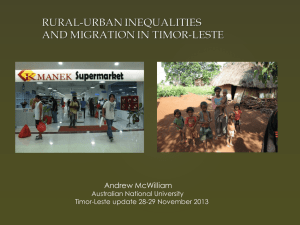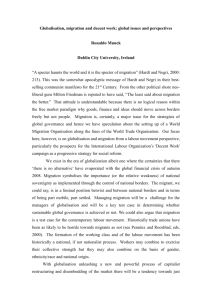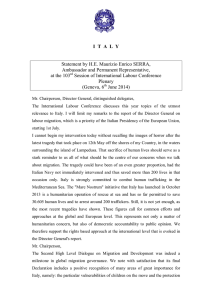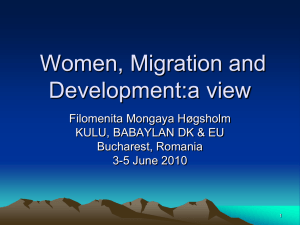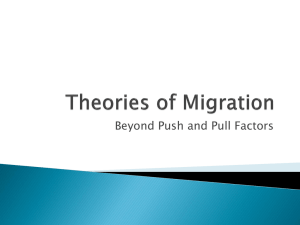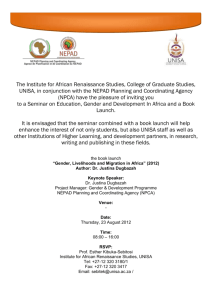Remittances & Livelihoods: Forest Dwellers in Pakistan
advertisement
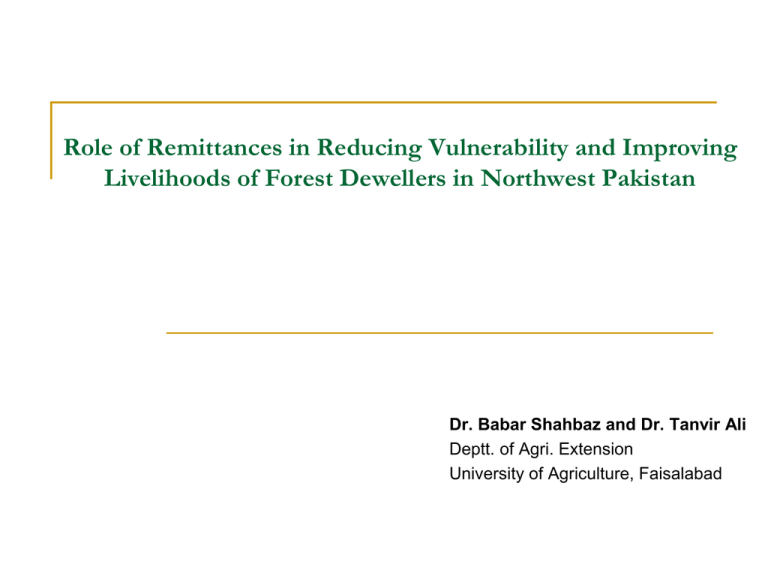
Role of Remittances in Reducing Vulnerability and Improving Livelihoods of Forest Dewellers in Northwest Pakistan Dr. Babar Shahbaz and Dr. Tanvir Ali Deptt. of Agri. Extension University of Agriculture, Faisalabad Natural Resource Degradation Deforestation = - 39,000 ha Soil erosion Water scarcity Climatic extremes Development Disparities District wise HDI in KPK Red box: Mountainous districts, Source: UNDP NHDR 2003 Source SDPI-WFP (2009) Source SDPI-WFP (2009) Methodology (impact assessment of forest related institutions on livelihoods of farmers) Qualitative Key Informant Interviews Focus Group Interviews Personal Observation Literature Review Quantitative Structured Questionnaire (400 randomly selected households) Primary Sources of Income % of Respodents 30 25 20 15 10 5 0 to ck fo re st la bo ur sa la ry pe ns io re n m itt an ce s ot he r es 8. liv 7. es s 6. si n 5. le 4. bu 3. 35 30 25 20 15 10 5 0 sa 2. Labour migration Daily wage labourer Salaries Farming Business Income from forests Livestock Pension cr op 1. % of respondents Main Sources of Cash Income Migration Migration by any household member during the past 5 years Foreign 12% Domestic 32% Nil 56% Migrant Destinations (Domestic) Lahore Azad Kashmir Other Karachi Rawalpindi Mardan Migrant Destinations (Foreign) Dubai 6% Other 13% Saudi Arab 81% % of household suffered due to insufficient food to less extent 10.8% not at all 39.0% to some extent 25.7% 16.0% to great extent 8.5% to a very great exte Vulnerability Trend (Human Factors) during past 5 years 1=Decrease a lot...5=Increase a lot Perceived trend past 5 years 5 4 3 2 1 Population Price of Food Diseases Unemployment At least one adult male in 43.5% of the households was unemployed % of households suffered from unemployment Missing to less extent not at all 21.5% 33.8% 19.8% to some extent 14.2% 10.5% to a very great exte to great extent Remittances for Subsistence Expenditures rivaj etc.. 5% clothings. 3% household items. 4% health. 12% education. 6% timber. 4% fire/fuel wood. 6% food. 60% Conclusions majority of the local people were not dependent on the natural resource for their cash income rather they had adopted diverse non-natural resource based activities such as migration, labour, small business etc. Financial livelihood concerns are not met from forests (e. g. by selling timber), but by selling labour in the context of migration. due to inadequate human capital (illiteracy, poor health) most of the migrants were doing minor and irregular jobs. Remittances are used for subsistence and thus ease-up the vulnerability to food insecurity The institutional changes in the agriculture and forestry sector of KPK might have had an impact on the current livelihood strategies by employing rural youth in the activities such as forest protection, new plantations etc. and thus providing a regular source of income for them. Emerging Issues for Further Research Links between migration, rural development (interventions) and natural resource (forest) management. Social Networks / social capital Uses of migrants’ knowledge Sustainability………..? THANKS.!

